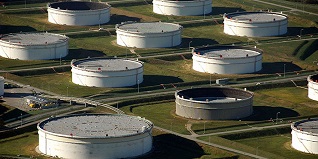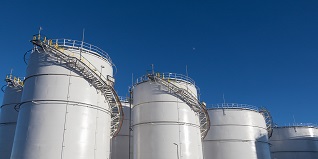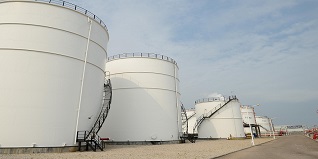As you assigned to design or erect the storage tank system (Pressure Vessels), many questions may strike your mind. The most basic, but important question will be, Which storage system makes more sense for my project: an underground or aboveground system?
So, let’s catch a look at some key questions that influence the ultimate required answer.
Q.1- Do Zonal Authority and Applicable Regulations Permit Aboveground Storage Tank (AST)?
The local government has total control over whether a tank permit will be issued for the proposed plan. They examine the plans to assure compliance with local, state, and national requirements. If the storage tank system does not meet the applicable codes and standards, please do not expect to get approval or any permit.
There are many cases in which government administrators discover that the storage tank system will place unnecessary risks on the general public, even though the storage system has been designed as per national codes and standards. Some give-and-take is often required to lessen the risks and to satisfy the authority so that the permit can be issued. If the answer to Question-1 is YES, go to the NEXT.
Q.2- Is Enough Plot Available to Separate the Aboveground Storage Tanks from Traffic, Buildings & Property, and Public Ways: Considering the Future?
This question is really important, as in many cases, due to insufficient space, the underground storage system becomes the compulsion, even though they are not required.
Therefore, make sure that the minimum required space per the regulations is available. Please do not decide the required space on today’s basis, but also considering the future, as there could be a future expansion in the plant or nearby areas. Click here to see the Pressure Vessel or LPG Storage Tank Layout Considerations.
It generally does not make sense to spend dollars on only today’s requirement just because you did not plan yet for a new building or
roadway expansion. If the answer to Question-2 is YES, go to Question-4.
If the answer to Question-1 or Question-2 is NO, go to Question-3.
Q.3- Can a Variance from the Authority Having Jurisdiction (AHJ) is Allowed by the Local Jurisdiction if the Proper Additional Safety Measures are Installed?
Some jurisdictions simply do not allow the aboveground storage tank system for fueling. If allows, there might be strict size limitations. The
only solution is to apply for a variance from the Authority Having Jurisdiction (AHJ). But do not be shocked if additional safety features are needed to satisfy the AHJ. For example, one state allows an aboveground storage tank for fueling up to 1000 gallon capacity. However, if
a protected tank meets Underwriters Laboratories UL 2085 (a standard for protected aboveground storage tanks for flammable and combustible liquids), that state can allow installing the larger tank with a capacity greater than 1000 gallons. If the answer to Question-3 is NO, then there is no way other than the installation of an underground storage tank system. If the answer to Question-3 is YES, go to Question-4.
Q.4- Is your Proposed Plan Able to Answer Some Critical Questions below?
- Will the proposed system be aesthetically acceptable?
- Can satisfactory spill control be provided to prevent fire or explosions?
- Can proper secondary containment for environmental protection be incorporated?
- Will the tank be protected from vandalism, settlement, and unalarmed pranks?
- Can the storage tank system efficiently support product storage and transfer?
If the answer to all these five points mentioned above is YES, then go for Question-5. If the answer to any of the five points discussed above is NO, then it is needed to redesign the system.
Q.5- Is the Storage Tank System Proposal Economically Sound?
If your answer is NO, then consider an underground storage tank system to take care of the cost of the project. As the construction and installation cost for an aboveground storage tanks (ASTs) system is almost 20 % more than the underground storage tanks (USTs) system. Sustainment costs (operational plus support) for AST’s are 41% higher than USTs. If the answer to the above is Yes, then you can go for the aboveground storage tank system. Click here to see the Tank Farm Design Considerations.

Major Cost of Aboveground Storage Tanks (ASTs) Project
Let’s see below some major hidden cost of ASTs Project:
1. Real Estate or Space Requirement
More plot area is required for ASTs than USTs. An aboveground storage tank system leaves a large impact on property investment. An underground storage tank (UST) system operates with fewer setback restrictions than ASTs and connected piping.
2. Security
Fencing or boundary walls will be needed to prevent damage from major or minor vehicle accidents. The security of the storage tank is discussed in both the “National Fire Protection Association” (NFPA) codes and the U.S. Environmental Protection Agency’s “Spill Prevention Control and Countermeasures” (SPCC) regulation. Again, this is not fixed, it can vary from places to places. For example, in Alaska, a fence can create problems in snow removal operations that are necessary to ensure access to an AST.
3. Man-hours
It takes a significant effort to get permits and project approvals from state and local officials. Likewise, provisions must be made for ASTs that will require federal SPCC plans. In extension, employees who fully understand USTs will likely need training to better understand the different operational requirements of the ASTs system.
4. Equipment & Components
AST system is not just a tank. You may require extra piping between the tank and dispenser due to fire and building code separation requirements. Antisiphon devices, thermal expansion relief valves, check & block valves, and emergency vents for primary & secondary containment are also part of the accurately engineered ASTs system.
5. Maintenance
A storage tank or pressure vessel that is installed out in the open area or aboveground requires periodic inspection, painting, and an occasional patch job. The operator has to properly drain rainwater from the open area of the dike or dyke.
6. Operation
You may have to account for vapor losses, especially if the tank is subject to
notable changes in ambient temperature. Also, Sustainment costs (operational plus support) for AST’s are 41% higher than USTs.
You may also read some useful contents
1. Piping Joint Types and Their Application
2. Reinforcement Pad Calculation for Branch Connection
3. How to Prepare the Pressure Temperature Rating Table for Piping System?
4. Miter Elbow or Miter Bend Design Calculations
5. Pipe Wall Thickness Calculation For External Pressure or Vacuum
References
- Above Ground Storage Tanks: Practical Guide to Construction, Inspection, and Testing Book by Sunil Pullarcot
- Handbook of Storage Tank Systems: Codes: Regulations, and Designs Book by Jim Wisuri
- Circular storage tanks and silos Book by A. Ghali
- Above Ground Storage Tanks Book by Philip E. Myers




I really appreciate your efforts and I am waiting for your next post thanks once again.